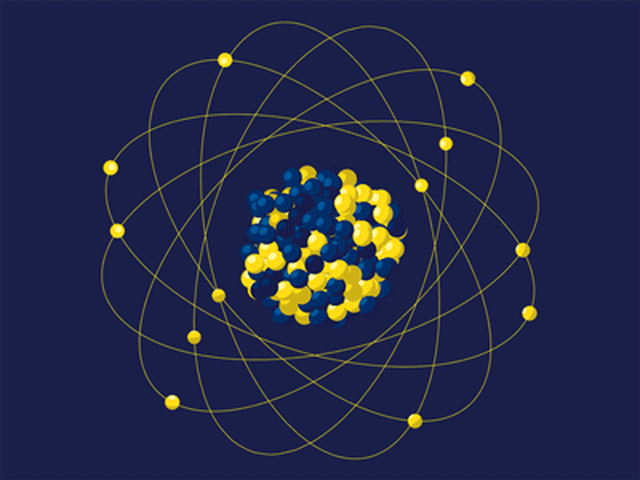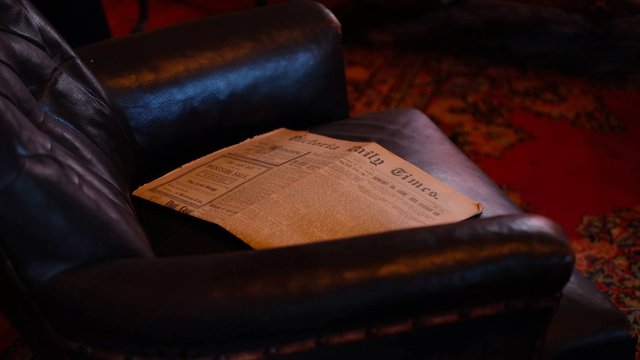“Suspension of disbelief” is an essential feature of theatre. Is it essential in other areas of knowledge?
Photo credit to Alex Block
Note: This post is adapted from an essay I wrote for my Theory of Knowledge class.
suspension of disbelief
phrase
a willingness to suspend one's critical faculties and believe the unbelievable; sacrifice of realism and logic for the sake of enjoyment
source
Based on this definition, we can discuss the importance of suspension of disbelief in theatre.
To enjoy theatre, the essentialness of suspending disbelief depends on the particular piece. There are many different factors which affect the essentialness of suspending disbelief. These factors range from the story to the way it’s presented.
For example, a story which is not deeply rooted in reality requires a fair amount of suspension of disbelief for the viewer to be able to place themselves in the story and hence enjoy the piece as they would be involved. On the other hand, a piece which is similar to the viewer’s own experiences, then suspending one’s disbelief is less important. However, if we look at the audience as a whole, then suspension of disbelief is clearly important as the audience consists of people from all kinds of backgrounds.
We can say that suspension of disbelief is essential in theatre as it helps us understand what is going on in the play and what is being told in the story. The need for understanding or entertaining thoughts without accepting them is also important outside of theatre.
Natural Science
For example, it is important in the area of knowledge natural science. In natural science, a theory is not completely accepted before convincing evidence has been presented. But theories and models are not always wrong, they can just be incomplete. Hence, to move forward in science, we must be able to entertain the thought of new theories that collide with already existing ones without accepting them before evidence is provided.

Evolution of the model of the atom
A perfect example of this is the evolution of the model of an atom.
Democritus
Democritus, a philosopher in Greece (470-370 B.C.) asked himself the question: “Can matter be divided forever?” and eventually came to the conclusion which was “No, it can not.” He then proposed that the indivisible particles be called “atomos,” which eventually evolved into the word “atoms”.
Dalton
The model was developed further by John Dalton, an English school teacher, who viewed atoms as tiny, solid balls. He was also the person to create the very first atomic theory.
His theory had four statements:
- Atoms are tiny, invisible particles.
- Atoms of one element are all the same.
- Atoms of different elements are different.
- Compounds form by combining atoms.
Thomson
After Dalton came the first larger change in how the atom was viewed. This change was brought into the world by J. J. Thomson who proved that atoms were not indivisible and was actually made up of even smaller particles. He discovered electrons and proposed the existence of a (+) particle. Thomson’s model was called the “raisin bun model” because he proposed that atoms are made mostly of (+) charged material, like dough in a bun and the (-) charged electrons are found inside the dough.
Rutherford
Rutherford then showed that atoms have (+) particles in the centre and are mostly empty space. He called the positive particles protons and the centre the nucleus.
Bohr then continued the work by proposing that electrons move around the nucleus in specific layers - shells.
James Chadwick then, working with Rutherford, discovered neutrons - particles with no charge, which are also found in the nucleus.
Modern Standards
By today’s standards, the modern model now specifies that we can not know where an electron is at any given time.
As we can see, there have been fairly significant changes in the model of the atom over time. Most importantly, the consensus went from the indivisible to consists of many different particles. This clearly needed a lot of imagination to be able to find reasonable explanations for problems that arose from experiments with atoms.
Picture from Wikimedia Commons
One of these problems that caused a new way of thinking about atoms was the gold foil experiment. When alpha particles were shot at gold foil, only some of the particles were deflected, which would have been impossible with the model in which atoms were not empty.
To find a reason for this, the scientists had to leave their disbelief at the door and they had to use their imagination to come up with a reasonable explanation to the situation.
In addition, they had to suspend their disbelief and entertain different explanations of current models being wrong or incomplete because otherwise their discoveries would not have been discoveries and most likely would have gone unpublished.
However, natural science is a very broad field, and not all science at all times has required suspension of disbelief to be able to move forward. For example, we can take the study of elements of the periodic table. When the properties of the elements were studied, they did not need to explain the reasons for why the elements had the specific properties, but they did need to describe the properties. For this, suspension of disbelief is not as important as in fields where radical changes, which turn the current view or understanding on its head, are more common.
Photo credit to Kingston Chen
History
Taking a look at another area of knowledge, history, we can see that the suspension of disbelief is quite important.
In history, it is crucial to remain unbiased and to keep one’s own prejudice away from facts and reasons.
In history, it is incredibly important to keep facts and opinions separate, and suspending all disbelief is part of the way that this is achieved. The way that suspension of disbelief plays into this is, for example, the following.
Imagine, for a moment, that a historian finds a letter which could turn the public's view of an important person, like the president of the United States, from good to absolutely horrible. The content of this letter seems so unbelievable that even when, after many studies, the letter is proved to be real, it’s still hard to use it in more studies.
In this case, suspension of disbelief is important because it allows facts to be presented as facts and the personal prejudice or opinions of the person making the discovery do not play a role in the work.
Conclusion
In conclusion, the essentialness of suspension of disbelief depends heavily on the area of knowledge and even the specific case. Based on the examples brought up in this essay, we can think more deeply about the importance of suspension of disbelief in both everyday life and academic life. It is important to know what kind of role suspension of disbelief plays in life so that we could understand how to apply it ourselves in the future to remain impartial when it is important.
Call to Action
Do you think "suspension of disbelief" is essential in theatre? Is it essential in other parts of life? Let me know in the replies below.




@originalworks
Brother your post is very beautiful. And interesting.
Brother you are doctor.
Thanks!
friends are you doctor?
Your post has been Resteemed @axynos
Send 0.008 SBD Or Steem and your link as memo to get resteem or send 0.01SBD or Steem to get my upvote and resteem. My vote value is 0.01$ .
Congratulations @axynos! You have completed some achievement on Steemit and have been rewarded with new badge(s) :
Click on any badge to view your own Board of Honor on SteemitBoard.
For more information about SteemitBoard, click here
If you no longer want to receive notifications, reply to this comment with the word
STOP